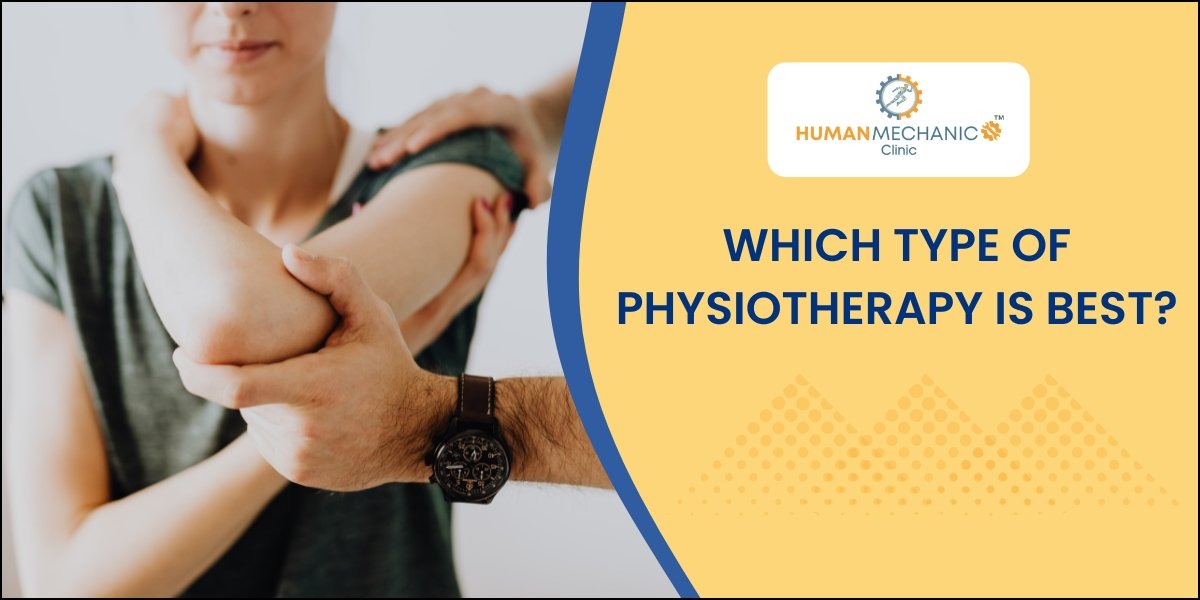Which Type of Physiotherapy is Best? Your Guide to Finding the Right Treatment
If you’re suffering from back pain, a sports injury, or recovering from surgery, you’ve likely considered physiotherapy. But a quick online search can leave you more confused than ever. With terms like orthopedic, neurological, sports, and vestibular physiotherapy flying around, it’s natural to ask: which type of physiotherapy is actually the best?
The truth is, there is no single “best” type of physiotherapy. The most effective treatment is entirely dependent on you—your specific condition, your goals, and your body’s unique response. Think of it like asking, “What’s the best tool?” The answer isn’t a hammer or a screwdriver; it’s the right tool for the job.
Understanding the Different “Tools in the Toolbox”
A skilled physiotherapist is like a master craftsman with a diverse set of tools. They will assess your condition and select the most appropriate techniques from various specialties. Here are some of the most common types:
1. Orthopedic Physiotherapy: The Musculoskeletal Expert
This is the most common form of physiotherapy. It focuses on treating injuries and disorders of the musculoskeletal system—your muscles, bones, joints, ligaments, and tendons.
-
Best for: Sports injuries (sprains, strains), post-surgical rehabilitation (after ACL or hip replacement surgery), arthritis, back and neck pain, and tendonitis.
-
Common Techniques: Manual therapy (joint mobilizations, manipulations), therapeutic exercises, stretching, dry needling, and taping.
2. Neurological Physiotherapy: Reconnecting the Pathways
This specialty deals with conditions affecting the brain, spinal cord, and nervous system. The goal is to retrain the brain and body to work together, improving movement, balance, and coordination.
-
Best for: Stroke recovery, Parkinson’s disease, Multiple Sclerosis (MS), spinal cord injuries, and neuropathy.
-
Common Techniques: Task-specific training, balance re-education, gait (walking) training, and strength exercises to compensate for neurological deficits.
3. Sports Physiotherapy: For the Athlete in Everyone
While it overlaps with orthopedics, sports physio is specifically tailored to athletes and active individuals. The focus isn’t just on recovery but on performance enhancement and injury prevention.
-
Best for: Athletic injuries, pre- and post-season conditioning, biomechanical analysis for performance, and safe return-to-sport protocols.
-
Common Techniques: Sport-specific drills, strength and conditioning, kinesio taping, and concussion management.
4. Vestibular and Balance Rehabilitation: Finding Your Equilibrium
This specialized area targets problems related to dizziness, vertigo, and balance disorders, often originating from issues in the inner ear.
-
Best for: Benign Paroxysmal Positional Vertigo (BPPV), Meniere’s disease, and dizziness following a head injury.
-
Common Techniques: The Epley maneuver (a series of head movements to treat BPPV), gaze stabilization, and balance retraining exercises.
5. Geriatric Physiotherapy: Promoting Healthy Aging
This field addresses the movement issues that can come with aging, aiming to reduce pain, restore mobility, and improve overall strength and safety for older adults.
-
Best for: Arthritis, osteoporosis, joint replacements, and fall prevention.
-
Common Techniques: Low-impact strength training, balance exercises, and functional training for daily activities.
So, How Do You Choose What’s Best for YOU?
The key isn’t for you to self-diagnose and choose a type. Instead, your journey should begin with a comprehensive assessment by a qualified physiotherapist. Here’s what to look for:
-
A Detailed Assessment: A good physio will spend time understanding your medical history, lifestyle, and specific goals. They will perform physical tests to diagnose the root cause of your pain.
-
A Personalized Plan: Based on this assessment, they will create a tailored treatment plan that likely draws from multiple types of physiotherapy. You might need manual therapy from orthopedics combined with balance exercises from neurological rehab.
-
Therapist Expertise: The best physiotherapists are lifelong learners. They integrate evidence-based practices from various specialties to create a holistic and effective treatment program.
Your Search for the Best Ends at Human Mechanic Clinic
If you are in Pune and looking for a clinic that embodies this personalized, multi-faceted approach to healing, your search ends here.
At Human Mechanic Clinic in Hadapsar and Koregaon Park, Pune, we focus on patient-first care with effective treatment results. Since every patient is different, we start with a detailed one-on-one consultation to understand your problem and provide the right solution.
Leading the team is Dr. Pravin Patil, widely regarded as one of the best physiotherapists in Pune. With his extensive knowledge across various physiotherapy disciplines, Dr. Pravin Patil doesn’t just treat symptoms; he uncovers and addresses the underlying cause of your pain. Whether you require advanced orthopedic manual therapy, neurological rehabilitation, or a bespoke sports injury program, you are in expert hands.
We don’t believe in a one-size-fits-all solution. We believe in the best solution for you.
Ready to start your journey to a pain-free life? Visit Human Mechanic Clinic, the best physiotherapy clinic in Pune, and experience the difference that expert, personalized care can make.

